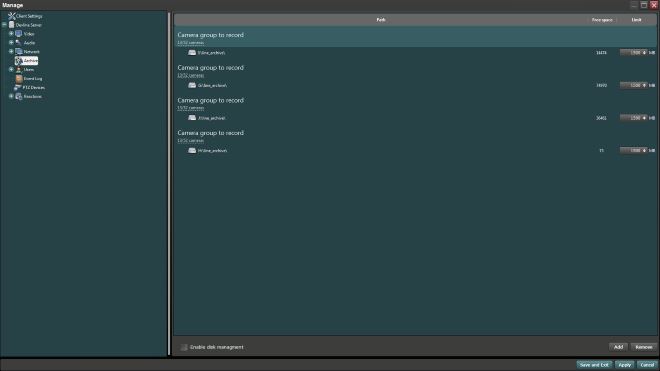HDD usage advice

|
Archive configuration
In the sixth version of the “Line” software all channels are recorded sequentially in the specified folders. If reading/writing operations overlimit HDD capacities, it is required to have the RAID. For the example of the detailed setting of NAS D-link ShareCenter please go to http://www.devline.net/NAS/ It is not recommended to use RAID levels, which do not increase the speed of reading/writing operations — for example, RAID 5 — for the recording of a large number of cameras. The tests of hardware-based RAID 0 and RAID 10 have shown significantly better results. One of the latest innovations of the seventh version of software is the ability to assign parallel recording of cameras to different disks. New Archive engine in the seventh version allows you to:
It is recommended to assign a maximum of 16 cameras to one physical disc drive with a total recording flow of no more than 250 Mbps. The system allows a setting up where each camera has separate HDD for recording. The same camera and source of the recording can not be assigned to different groups. The program has the cyclic video recording mode: if the disk space is over the program will start to write new data over the old one. If several folders for archives were assigned for a group, they will be filled sequentially. HDD parameter selection
While choosing an HDD it is essential to take into consideration the required twenty-four-hour operation. Such operation is one of the key user requirements to surveillance systems. Choose surveillance system hard disks carefully, since they operate under high loads. It doesn't mean that it is necessary to use only highly specialized disks for video recording, it is possible to choose the appropriate hard disk drive following the next parameters:
HDD monitoring
S.M.A.R.T. (Self-Monitoring, Analysis and Reporting Technology; often written as SMART) is a monitoring system used on computer hard disk drives that detects and reports on various indicators of drive reliability with the purpose of forecasting hardware failures. |


